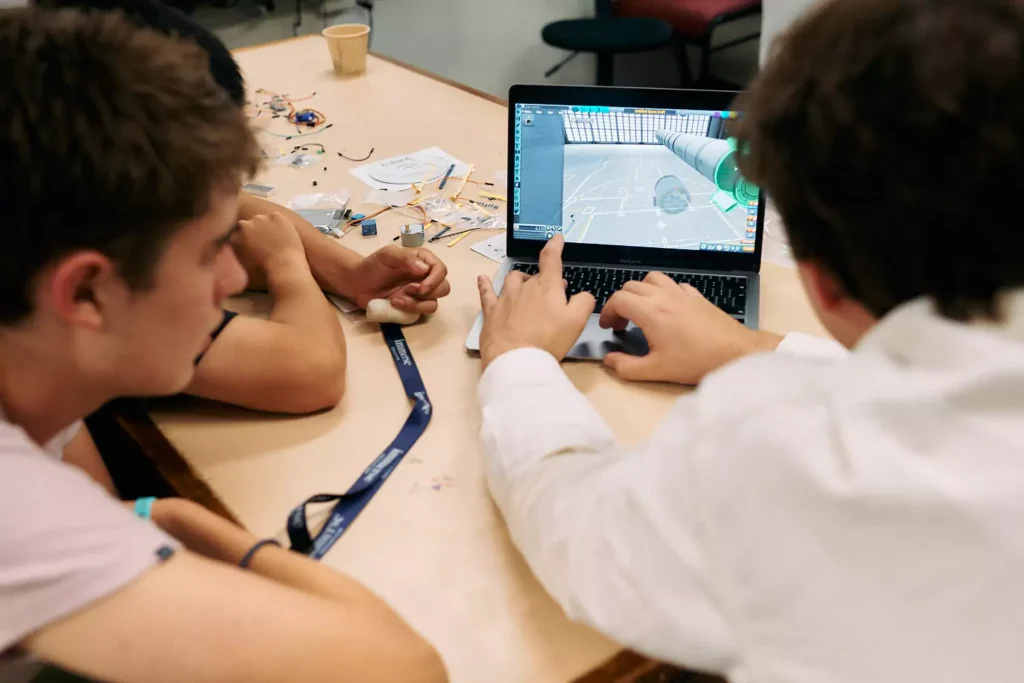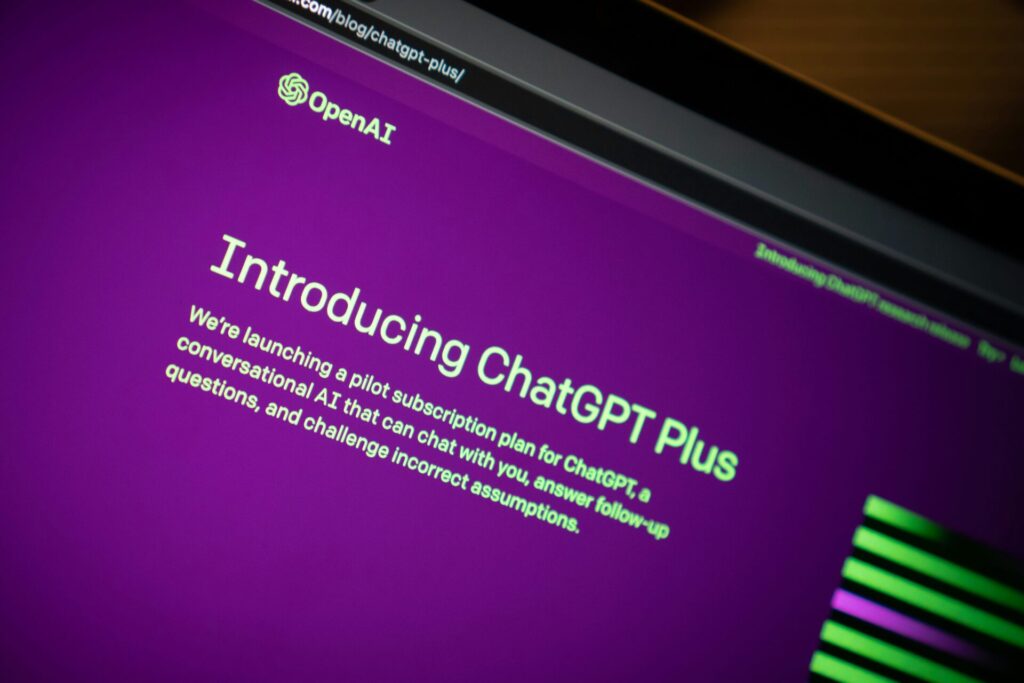Summer school offers students a chance to recover missed credits, jump ahead in their studies, or explore new interests outside the traditional school term. With advancements in technology, online summer schools provide a modern alternative to in-person classes, allowing students to learn remotely and at their own pace.
But how do these two options differ beyond their delivery format? What do they have in common? And how can you choose the best program for your academic goals? This guide will explore the details of online summer school, compare it with in-person programs, and help you determine which format is right for you.
What Is an Online Summer School?
Online summer schools are web-based educational programs offering courses for academic credit or personal development. Students can access lectures, assignments, and quizzes via digital learning platforms rather than attending a physical classroom. Most of these programs cater to various age groups, including high schoolers, undergraduates, and even young learners.
Unlike traditional summer schools, online programs are highly flexible and accessible. Whether a student is on summer vacation, has a part-time job, or simply wants the convenience of studying from home, online courses can fit around their busy schedule. The variation in available courses and programs—from remedial classes to advanced electives and skills-based training—is another significant draw for students.
In-Person Online Summer Schools: A Clear Comparison
Online and in-person summer schools are fundamentally different in how they operate, yet both aim to provide enriching educational experiences. By focusing on their similarities and key differences, we can better understand what each format offers.
Similarities
- Academic Goals and Outcomes
Both formats aim to help students achieve academic success, whether through credit recovery, grade improvement, or enrichment opportunities. For example, a student who missed a math class during the school year can take either an online or in-person summer course to catch up. - Wide Variety of Courses
Both online and in-person programs offer a broad range of subjects to cover students’ diverse learning needs. Core subjects like English, math, and science are frequently available, as well as electives like coding, creative writing, and foreign languages. - Program Length and Structure
Summer school programs, regardless of delivery method, are typically structured to fit into summer vacation periods. They might last a few weeks or stretch over a couple of months, depending on the student’s goals. Both formats can include intensive short-term options, making it possible to complete a course within a few weeks. - Age and Level Accessibility
Both formats cater to various educational levels. Whether you’re an elementary school student, high schooler, or college-bound learner, you’ll find age-appropriate options in either setting. - Accreditation
Accreditation levels can differ significantly between programs – both online and in-person. Some summer schools are linked directly to accredited institutions, which ensures credits are transferrable to other schools. However, some are independently run or uncertified, with coursework that may not meet standardized educational criteria. It’s crucial for students and families to verify whether a program is accredited before enrolling.
Differences
Learning Format and Interaction
One of the most notable differences is the learning environment and how students interact with teachers and peers.
- Online:
Students access materials and engage with instructors through digital platforms, email, or video chat. While some online courses feature live sessions (synchronous), others allow students to study on their own schedule (asynchronous). Social interaction is usually limited to discussion boards or group projects conducted online. This can suit self-motivated learners but may feel isolating for others. - In-Person:
Classroom settings foster direct interaction with teachers and classmates. Students can ask questions in real time, collaborate on group activities, and form bonds during breaks or extracurricular activities associated with the program. This dynamic social environment enhances communication and teamwork skills.
Structure and Discipline
- Online:
Online summer schools rely heavily on self-discipline. Students must manage their schedules, stay organized, and remain motivated. While there is freedom to complete assignments around personal schedules, that flexibility may lead to procrastination for some. - In-Person:
The structured timetable of in-person programs creates a routine that keeps students accountable. Fixed schedules, regular class times, and face-to-face accountability can benefit students who thrive in structured settings.
Instructor Roles and Accessibility
The quality of instructor involvement can differ greatly between online and in-person programs.
- Online:
Online programs often feature pre-recorded lessons or lectures, leaving students to learn independently. Depending on the program, instructor involvement may range from occasional feedback to regular, one-on-one mentoring. However, in some online courses, contact with qualified teachers might be minimal or delayed, leaving students to rely heavily on self-guided learning. - In-Person:
Classroom-based settings provide instant access to instructors. Teachers can clarify concepts, provide immediate feedback, and adapt lessons to suit the students’ needs. The physical presence of an instructor often adds a layer of accountability and encouragement that helps many students thrive.
Cost and Accessibility
- Online:
Online programs often eliminate expenses like commuting and classroom materials, making them more affordable. Additionally, the global access offered by online schools means students can enroll in programs offered by prestigious institutions worldwide. However, families should account for costs associated with technology, such as high-speed internet or updated devices. - In-Person:
Traditional summer schools can come with higher costs due to transportation, meals, and printed materials. Local availability can also limit options, particularly for niche subjects or advanced courses.
Hands-On Activities vs. Technology
- Online:
Online programs use advanced tools like VR, AI-driven learning platforms, or interactive dashboards. These technologies enhance the learning experience and provide a digital edge. However, hands-on activities, such as experiments or physical projects, may be harder to replicate effectively online. - In-Person:
Subjects requiring physical involvement, like art, music, or laboratory-based sciences, are easily accommodated in in-person settings where students have access to materials and facilities.
How Do Online Summer Schools Work?
Online summer schools operate through centralized learning management systems (LMS). Platforms like Google Classroom, Canvas, or proprietary systems serve as digital classrooms where students can access materials, track progress, and communicate with instructors. Here’s how they work:
Synchronous vs. Asynchronous Models
- Synchronous:
Classes are held live at specific times, providing real-time interaction with instructors and peers. This structure mimics the experience of an in-person classroom. - Asynchronous:
Students complete pre-recorded modules and access content anytime. Assignments have deadlines but allow for self-paced learning, making this format highly customizable.
Additional Features to Watch Out for
Online summer schools have revolutionized the learning experience with groundbreaking technologies that make education more accessible, flexible, and engaging. From intelligent AI-driven study tools to interactive dashboards, a range of sophisticated features supports student success. However, understanding these technologies and their benefits is key to getting the most out of an online summer school program. Here’s a detailed breakdown of the course tools and support systems that stand out in online programs.
Accreditation Checks
One of the most critical features of online summer schools is their accreditation status. Accreditation ensures that the program adheres to established educational standards, making credits transferable to major institutions such as high schools, colleges, or universities. While in-person programs are often tied to accredited schools by default, online courses vary widely, with some ensuring recognized credentials and others serving as supplementary or skills-based learning experiences.
Many online summer schools now provide accessible accreditation verification tools. For example, when enrolling, you might find a section on the program’s website allowing you to verify its status through a reliable accrediting body. Accreditation checks are crucial if the credits earned from the online course need to be included in a formal transcript.
Benefits
- Validation: Accreditation gives students and parents peace of mind that the coursework meets national or international academic standards.
- Transferable Credits: Students can confidently use their achievements from accredited programs to satisfy graduation requirements or bolster college applications.
- Quality Assurance: Ensures instructors, course content, and assessment methods meet rigorous guidelines.
Challenges
- Identifying Reliable Accreditation Bodies: While most reputable programs have clear affiliations, some may market themselves as “recognized” without meeting formal standards. This requires families to conduct thorough research.
AI-Powered Customization
Artificial Intelligence (AI) has transformed online learning by personalizing educational content to suit individual student needs. Unlike in-person classrooms, where teachers may not always have the time to cater to every student’s unique learning pace, online programs use AI to fill this gap.
AI algorithms analyze student performance in real-time, identifying strengths, weaknesses, and patterns in engagement. Based on this data, the technology curates a personalized learning path. For instance, if a student struggles with quadratic equations in an algebra course, an AI system might recommend additional practice exercises or video tutorials focused on that specific topic.
Some platforms use advanced AI to simulate tutor-like interactions. For example:
- Adaptive Quizzing: Quizzes adjust in difficulty based on how well a student performs, ensuring a balanced challenge and building confidence incrementally.
- Recommendations: AI systems suggest supplemental resources, such as videos, articles, or interactives, tailored to a student’s progression.
Benefits
- Efficiency: Students focus on areas they truly need to improve, maximizing the impact of their study time.
- Engagement: Personalized suggestions keep students motivated by addressing topics and teaching styles that resonate with them.
- Early Intervention: AI identifies gaps in understanding and alerts instructors before issues escalate.
Challenges
- Over-Reliance on Technology: Some students might depend too heavily on AI tools, neglecting opportunities for critical thinking or self-directed problem-solving.
- Data Concerns: AI systems rely on extensive data collection, raising potential privacy issues.
Instructor Feedback and Accessibility
While AI is an incredibly powerful tool, the human touch remains an essential component of any quality educational experience. Online summer schools often combine technological tools with instructor-based guidance. Teachers play a pivotal role in answering questions, monitoring progress, and motivating students.
Programs vary greatly in how much access students have to instructors. High-caliber courses include features like:
- Live Q&A Sessions: Students can clarify doubts during scheduled live webinars or one-on-one video calls.
- Detailed Feedback on Assignments: Submissions are graded with personalized feedback, mirroring the close attention received in a traditional classroom.
- Office Hours: Some platforms allow students to book virtual meetings with their instructors, ensuring no question goes unanswered.
Advanced learning platforms even offer teacher-assisted grading augmented by AI. For example, AI can provide preliminary insights (like grading multiple-choice answers), while teachers analyze subjective submissions, such as essays, adding nuanced feedback.
Benefits
- Accountability: Students know their work is reviewed by a real person, which can motivate them to perform better.
- Student Confidence: Direct teacher engagement provides assurance that the student is on the right track.
- Targeted Support: Teachers can focus on specific weaknesses, addressing broader concerns than technology alone might highlight.
Challenges
- Availability: One drawback is that instructor accessibility can sometimes be limited to fixed hours or set appointment windows, leaving students unable to receive immediate answers.
- Consistency: The quality of teaching and responsiveness may vary between programs or even individual staff members.
Self-Monitoring Dashboards
Self-monitoring tools are a standout feature of online summer schools, allowing students and their families to track progress in real time. Through user-friendly dashboards, learners can review their grades, monitor assignment deadlines, and visualize their performance in different topics or modules.
These platforms are designed to make staying on track easier:
- Progress Bars: These visual indicators show how much of the course material has been completed.
- Deadline Alerts: Notifications help students manage time effectively, ensuring no assignment is overlooked.
- Performance Analytics: Some systems generate charts or graphs that illustrate areas where the student excels or struggles.
For parents, dashboards provide transparency, offering insights into their child’s dedication and progress. Whether it’s a GPA tracker or a summary of exercise completion, these features give guardians the capacity to support their child’s progress without constant instructor intervention.
Benefits
- Improved Organization: Everything from grades to schedules is neatly centralized, reducing stress for students.
- Real-Time Adjustments: Visual cues like performance graphs help motivate students to focus on weaker areas.
- Parental Engagement: Parents can easily monitor their child’s results without guessing or needing extensive updates from instructors.
Challenges
- Overwhelming for Some Students: Having constant data at their fingertips might overwhelm students with anxiety about underperformance.
- Tech Issues: Platforms with glitches or downtime can frustrate learners who rely on seamless monitoring.
Advanced Interactive Features
Modern online summer schools continue pushing the boundaries of interactivity. Beyond these core tools, today’s courses offer deeply engaging features that redefine the educational experience:
- Virtual Reality Simulations:
Courses in subjects like biology or anatomy may incorporate VR experiences. For example, students could explore a digital model of the human body in a 360° environment, providing an unparalleled level of immersion. - Gamification:
Many platforms incorporate rewards systems and challenges to keep learning fun. Students might earn badges for completing assignments or streaks for consistent logins. - Collaborative Projects:
Teamwork is fostered through digital whiteboards, group chatrooms, and shared file spaces. For instance, coding classes might have students co-develop an app in a virtual workspace.
Benefits
- Engagement: These features transform learning from passive consumption into active participation.
- Real-World Applications: Skills developed in VR simulations or gamified tasks often mirror professional scenarios.
- Global Collaboration: Students can work with peers worldwide, teaching cross-cultural communication.
Challenges
- Technical Requirements: Programs demanding VR headsets or high-performance computers may exclude students without these technologies.
- Learning Curve: Adapting to new tools might overwhelm less tech-savvy students.
Join the Immerse Education 2025 Essay Competition
Follow the instructions to write and submit your best essay for a chance to be awarded a 100% scholarship.

What Subjects Are Covered in Online Summer Schools?
Online summer schools provide a diverse range of educational opportunities, offering flexibility and innovation to meet the learning needs of students. Below, we explore the courses categorized into five key areas, with examples of programs students might encounter within each category.
Core Academic Courses
Core academic courses lie at the heart of online summer schools, offering students the chance to solidify their understanding of essential subjects, catch up on credits, or prepare for the upcoming school year. Below are examples of courses that might be available in this category:
- Mathematics
A course focusing on geometry fundamentals might guide students through topics like shapes, angles, theorems, and proofs. Interactive tools and visually engaging exercises could help illuminate abstract concepts for deeper understanding. - English
A course centered on literary analysis could explore the works of classic authors like Shakespeare. By studying plays such as Hamlet or Macbeth, students might develop stronger essay writing and critical reading skills. - Science
A virtual physics course might challenge students to unravel the principles of motion, energy, and force through online lab simulations. For example, one module could involve calculating gravitational effects in a planetary system. - History
Students interested in understanding how the past shapes the present might enjoy a course exploring ancient civilizations. Such lessons could feature virtual maps and timelines, demonstrating cultural developments and historical events in a dynamic way.
Advanced Placement (AP) Prep
AP prep courses are designed for high school students aiming to excel in rigorous, college-level coursework and perform well on AP exams. Here are some examples of programs students might encounter under this category:
- AP Calculus AB
A program focusing on AP Calculus AB might cover concepts like limits, derivatives, and integrals, using interactive graphing software to support complex topics. Review sessions could simulate exam-style questions to enhance preparedness. - AP Biology
Such a course might explore ecosystem dynamics, cellular biology, and genetics. Virtual lab environments could allow students to simulate experiments, such as observing the effects of environmental factors on gene expression. - AP English Literature and Composition
A course for AP English could involve exploring classic and contemporary literature, guiding students to analyze themes, characters, and rhetorical devices. It might also focus on crafting analytical essays under timed conditions.
Skill-Based Learning
Skill-based courses prepare students with practical abilities they can apply in creative or professional contexts. These programs emphasize hands-on experience. Examples of skill-building opportunities might include:
- Programming and Coding
A course focusing on Python or Java might train students in designing algorithms and solving problems through programming. For example, students could create functional apps or games during guided project sessions. - Entrepreneurship
A program in business development might introduce learners to basics like drafting business plans or creating marketing strategies. Participants could pitch their ideas to a panel of mentors for feedback. - Digital Design
A course in animation and graphic design could enable students to use software like Adobe Illustrator for creating promotional visuals or storyboards for short films. - Financial Literacy
A financial literacy course might teach concepts like budgeting, saving, and investing through interactive simulations. For example, participants could learn to build a mock investment portfolio and evaluate long-term growth.
Language Learning
Language programs aim to build linguistic proficiency while immersing students in cultural contexts. Below are examples of language courses that might be offered:
- Spanish
A Spanish course might emphasize conversational fluency through practice scenarios, such as ordering food at a restaurant or taking a virtual tour of Spanish-speaking countries. - Mandarin Chinese
A program focusing on Mandarin could include tonal pronunciation exercises and written Chinese character lessons. Students might practice forming sentences by role-playing everyday interactions. - French
Students might expand their vocabulary and improve grammar while virtually visiting iconic French locales like the Louvre or Notre-Dame, making cultural connections along the way.
Research Programs
Research programs give students the opportunity to explore specialized academic fields while conducting independent projects. Here are examples of research-based opportunities students might engage in:
- Immerse Education Online Research Programme
This program provides adolescent scholars with access to expert mentors from disciplines such as engineering, medicine, and law. For instance, a participant might explore the ethical implications of AI in medical diagnostics and present their findings in a research paper. Immerse Education’s ORP is accredited, giving students the chance to earn UCAS points or college credits. - STEM Research Opportunities
A course focusing on STEM might guide students through designing experiments or analyzing data from real-world problems. A student passionate about space, for example, could examine the potential for life on Mars. - Humanities Research
A course encouraging deep humanistic inquiry might offer an exploration of global issues like digital privacy or social justice. Participants could create reports or essays addressing key questions and challenges.
Advantages and Disadvantages of Online Summer Schools
Advantages
1. Flexibility to Learn from Anywhere
One of the greatest benefits of online summer school is its flexibility. Students can log in and learn from the comfort of their homes, a library, or even while traveling. This is especially useful for families who move frequently or for students balancing summer jobs, internships, or other commitments. For instance, a student on vacation could keep up with their AP biology course by dedicating an hour or two daily to online modules. The ability to set your own schedule and adapt learning to your lifestyle makes online programs a valuable option for many learners.
2. Easier Access to Global Courses
Online summer schools remove geographical barriers, connecting students with courses and educators from around the world. This means a student in the U.S. could participate in a language immersion program with instructors from Paris or enroll in a STEM masterclass taught by professors at a top London university. Such diverse opportunities expose learners to new perspectives, teaching styles, and cultural insights, which they might never experience in traditional, location-based education.
3. Cost Savings on Transportation and Materials
Traditional summer programs often involve costs related to commuting, supplies, and sometimes even accommodation. Online summer schools eliminate or significantly reduce these expenses. Students don’t need to budget for gas, bus fare, or textbooks; many programs replace physical materials with downloadable resources or access to digital platforms. For a family looking to save money while still investing in education, this can make a meaningful difference.
4. Modern Tools Like VR and AI Enhance Engagement
The incorporation of advanced technologies like virtual reality (VR) and artificial intelligence (AI) has redefined how learning takes place in online summer schools. For example, a virtual physics course might use VR to simulate lab experiments, allowing students to explore theoretical concepts in a hands-on, interactive way. Meanwhile, AI-powered tutors can provide real-time feedback and suggestions, personalized to each student’s learning pace and style. These tools make sessions more captivating and ensure that students stay engaged with the material.
Disadvantages
1. Requires Strong Self-Discipline
While the flexibility of online summer school is appealing, it demands a high level of self-discipline and motivation. Students need to set their own schedules, meet deadlines, and stay on top of coursework without the structure of a traditional classroom setting. Those who struggle with procrastination or time management might find it challenging to complete their courses on time. For example, a student juggling sports practice and online summer school might need to create a strict study plan to avoid falling behind.
2. Limited Face-to-Face Social Interaction
Online programs often lack the social components of in-person classes, such as collaborative group work, casual conversations with peers, or bonding over shared experiences. This can be especially isolating for younger students or extroverted individuals who thrive in interactive environments. While some online schools try to recreate this through discussion boards, video group projects, or virtual hangouts, it’s not quite the same as meeting friends in a physical space.
3. Technological Glitches Can Interrupt Progress
Reliable internet and up-to-date equipment are crucial to succeeding in online summer schools. However, technology isn’t foolproof. Issues like unstable internet connections, software glitches, or compatibility problems can disrupt a student’s learning flow. Imagine a student taking a timed coding exam only to have their progress erased because of a system crash. Such challenges can cause unnecessary stress and require swift troubleshooting to avoid falling behind.
FAQ
1. Can You Take Summer School Online?
Yes, online summer school programs are widely available and are often accredited, meaning they meet educational standards and can count towards credit requirements. These programs cater to a range of needs, such as high school students looking to recover credit, college-bound students preparing for advanced coursework, or even younger learners building foundational skills. For example, a high schooler aiming to improve their math skills might take an online course focusing on algebra, while an elementary student could explore introduction-to-coding classes from home.
2. How Much Does It Cost?
The cost of online summer schools can vary greatly depending on the type of course, its duration, and the institution offering it. On average, prices range from $100 to $1,000. Entry-level courses, such as basic writing workshops, tend to be on the lower end of the spectrum, whereas specialized or AP prep courses often cost more. Some programs, like nonprofit educational initiatives, might even offer free or low-cost options for eligible students. When budgeting, it’s important to review if additional expenses like software subscriptions or online tutoring are required.
3. What Are Popular Courses?
Some of the most sought-after courses in online summer schools include AP prep classes, which help students prepare for college-level exams while avoiding the pitfalls of cramming. Similarly, coding workshops have risen in popularity as students gain skills in Python or Java, which can later be applied to various projects like game development. Another favorite is college essay workshops. These classes guide students in crafting compelling personal statements, offering tips on structure, tone, and how to stand out to admissions committees. Additionally, language immersion programs and creative arts classes, such as digital design or screenwriting, are increasingly popular. These courses not only foster learning but also allow students to build unique skills during their summer break.
Final Thoughts
So, can you do summer school online? Choosing between in-person and online summer school depends largely on your learning style and priorities. Online programs deliver unmatched flexibility, while in-person schools focus on interaction and hands-on learning. Whatever you choose, be sure to verify accreditation and consider the program’s features to find the perfect fit.

























